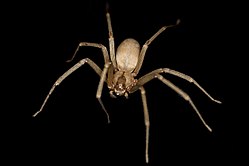Thursday, October 30, 2014
Owl Pellet Soup
Our Biology lab today consisted of dissecting owl pellets and examining the contents within. An owl pellet is of similar size to human's thumb, these pellets are the product of an owl vomiting up the parts of its prey that it cannot digest. These parts that the bird rejects would be bones and teeth. The reason the owl, along with other birds of prey, regurgitates these parts of an animal is because the bones are not digestible and would do great harm to the birds internal organs. Once we began dissecting the pellets we would find a bone, remove it, and then examine it under a microscope, and, using a key would decide what bone the bone we found is. Through this process my partner and I figured out (to a point) which animals the owl, whose pellet we were dissecting, had identified as prey. The process I afore described was not a pretty one, although it was very interesting and a good experience
Sunday, October 19, 2014
Invertebrates
On Thursday of last week in Biology Lab, our class examined various arthropods, almost all of which were insects. Using microscopes and a key similar to that of a dichotomous key one uses to identify trees, we identified which order each chosen arthropod belonged to. To the naked eye the "bugs" are not the most impressive, interesting, or complex group of organisms. But once we put them under a microscope and looked for characteristics unique to that "bug." We had to examine all the parts of these arthropods that one never notices when passing a flower bed, or swatting a pest. For example, we weren't simply to identify if the creature had wings, but how many, and if those wings were the same or different sizes, and if the wings had many veins. We were also called to examine the mouth and antennae of the animals, and decide how many segments made up the antennae, and what type of mouth parts the certain arthropod had. The process was even more detailed than what I have mentioned but to describe it all would be very time consuming. This lab really opened my eyes to how intricate and delicate things are outside of what I observe walking around, taking the time to sit down and analyze these bugs that are often over looked or taken for granted was a great experience.
Friday, October 10, 2014
Gigantic Brown Recluse

A couple weekends ago, I was in the basement of Clay doing laundry and the BIGGEST Brown Recluse Spider came out of nowhere. I do not like spiders at all even though I know they serve a purpose I cannot stand to be near one. Anyways, I did some research on these spiders and found that the average size is about the circumference of a nickel, although size can differentiate somewhat greatly. The best way to identify a brown recluse spider is the color, generally light to medium brown, along with the odd marking on their backs that resembles a violin or fiddle. Well I used these tools to identify this spider and it was definitely a Brown Recluse, however this guy would've covered the top of a coke can! He was the biggest spider I have ever seen, and it was terrifying. I had no means of smashing him immediately around me, and I knew it would take more than my flip flop and I had no desire to get my bare foot anywhere near that cat sized spider. So, I grabbed a chair, about the similar to the ones found in most of the dorms on campus, and I crushed him with the chair. But when I picked up the chair the spider seemed unaffected and began to RUN AWAY. At this point I was absolutely terrified and knew that I had to kill it now or I would never be able to rest knowing that this ginormous spider was in the same building as myself... So I literally threw the chair at this spider and, thankfully, hit right on the money, completely squishing the devil. I was so relieved at first, but soon I began to think of how many more there might be surrounding me. Needless to say I got my laundry and retreated to my room in record time!
http://www.brownreclusespider.org/brown-recluse-spider-information.htm
Subscribe to:
Posts (Atom)